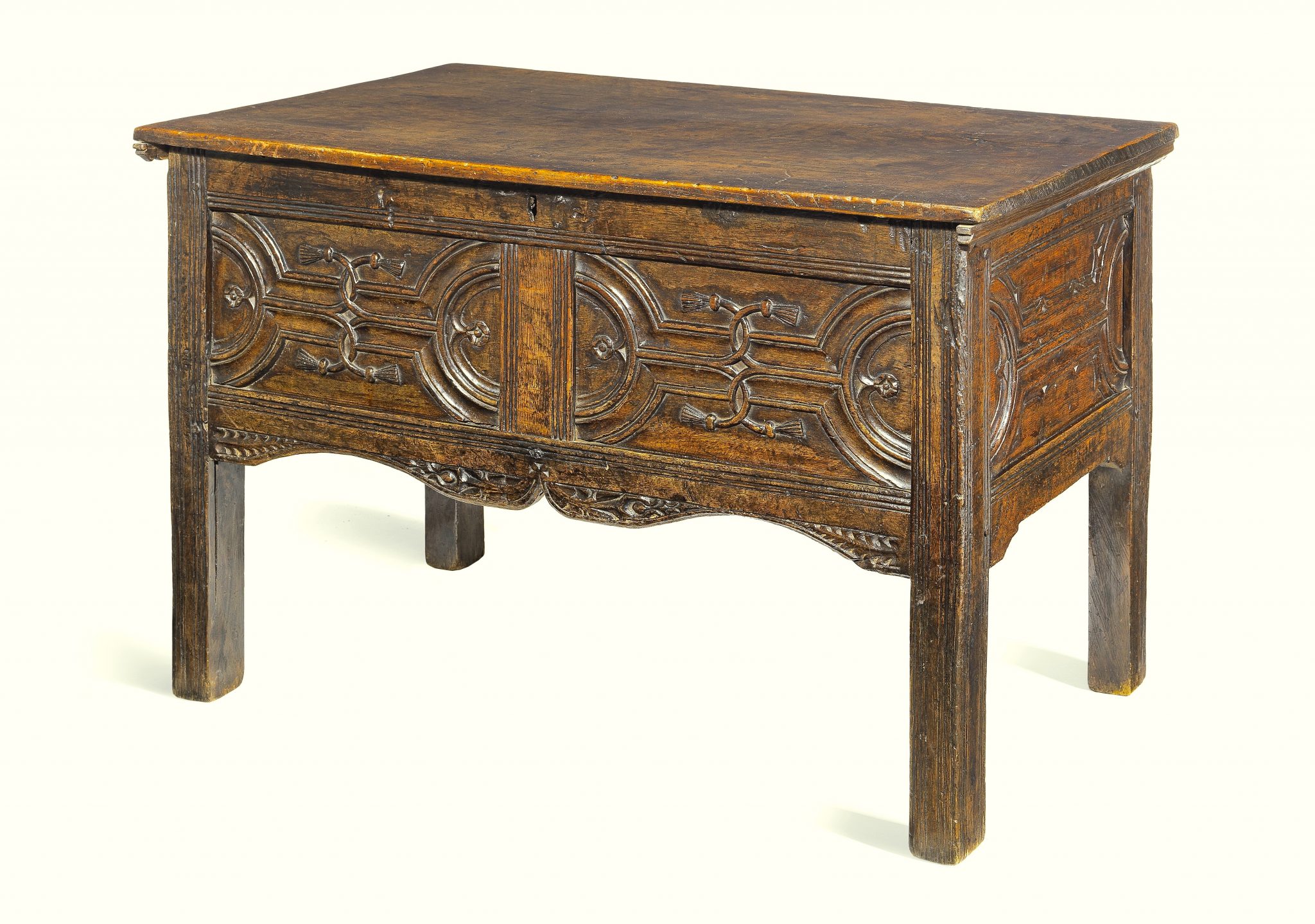Henry VIII oak counter table
Circa 1530 - 1540
England
W 42" × H 29 3/4" × D 27 1/4"
Stock # Marh2062
SOLD
Henry VIII joined oak counter table
Having an historically associated single-piece walnut top, correctly sliding rather than typically later hinged, the front with two embellished parchemin-carved panels, and a leaf-carved ogee-profiled base rail, the twin-panelled back with standard central upper key-hole, a further parchemin panel to each side, raised on multiple line-incised extended stile supports.
The name 'counter table' describes a table with a top marked out with a series of lines and squares to assist in calculating accounts. Alternatively, a marked cloth could be used. The counted coins could easily be deposited into the chest by employing a sliding lid. It is now common to find the sliding top later hinged. Although these tables are rare, the Burrell Collection, Glasgow, has no less than three examples, all with parchemin panels, [Accession Nos. 14.358, 14:354 & 14,352], with one also carved with the arms of Scarborough and Ghisburn, Yorkshire. A counter table with linenfold-carved panels is in the collection of the Victoria and Albert Museum [Museum No. W.49-1952].
For related illustrated tables see R. W. Symonds, 'The Counter Board', The Connoisseur, December 1951, p. 174, No. XII; Ralph Edwards, The Dictionary of English Furniture (1990), Vol. II, p. 147, fig. 3 and sold Sotheby's The Peter Gywnn Collection, London, 27th November 2001, Lot 3; S. W. Wolsey & R. W. Luff, Furniture in England: The Age of the Joiner (1968), pl. 122 and Victor Chinnery, Oak Furniture: The British Tradition (2016), p. 242, figs. 3:155 & 3:156.
A comparable 'counter table', formerly in the celebrated Roger Warner Collection, sold Bonhams, London, The Olive Collection, 31 January 2019, Lot 62 £16,900.
